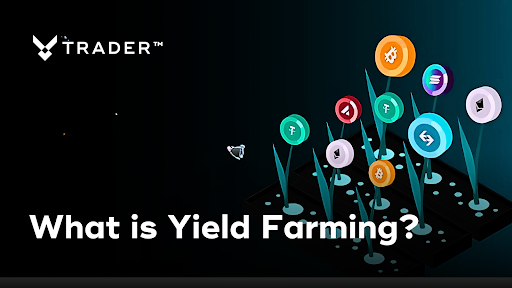Yield Farming in DeFi: How to Maximize Returns Without Getting Wrecked
What You’re Getting Into
If you’re holding crypto and letting it sit, you’re missing out. Yield farming gives you a way to put that idle capital to work. You lend or stake tokens through DeFi protocols and, in return, you earn rewards—sometimes interest, sometimes native tokens, sometimes both.
It sounds simple on the surface. But yield farming is layered. There’s potential for juicy returns, sure, but it comes with real risk. One wrong move, and your “passive income” turns into a cautionary tale.
Let’s walk through how it works, what makes it attractive, and what you need to watch out for.
What Yield Farming Actually Means
Here’s the short version: You supply crypto to a DeFi platform. That platform uses your assets to power trades, loans, or liquidity pools. You get paid for helping the system run smoothly.
Your rewards might include:
- Interest payments from borrowers
- A cut of transaction fees
- New governance or incentive tokens (think: COMP, CRV, or SUSHI)
- Bonus tokens from liquidity mining events
These rewards can add up fast—especially when platforms layer incentives to attract liquidity. But don’t let the upside distract you from the fine print: yield farming isn’t free money. Smart contract bugs, market volatility, and rug pulls can wipe out your gains in a heartbeat.
How APY Works (and Why It Can Be Misleading)
When you evaluate a farming opportunity, the APY (Annual Percentage Yield) is usually the first number you’ll see. It tells you how much you’d earn in a year if returns were compounded. But in DeFi? APYs change constantly.
Some protocols flash 500%+ returns to get attention. Those numbers are often inflated by token emissions, short-term hype, or low initial liquidity.
Here’s what really moves the needle on your APY:
- Bonus tokens (e.g. protocol-native coins)
- Volume-based fees from AMMs like Uniswap
- Leveraged farming strategies that boost exposure
- Timing—early farmers usually get better yields
Just keep in mind: the higher the APY, the higher the risk. If a platform is paying 300%, ask yourself why. Something is being subsidized, and it’s usually not for your long-term benefit.
How Yield Farming Evolved
What started as a simple lending loop has morphed into a full-blown arms race. Here’s a quick timeline:
- 2019: Platforms like Compound and Aave kick off basic lending/borrowing.
- 2020: “DeFi Summer” explodes. COMP launches, and everyone starts yield farming.
- 2021: Yearn Finance automates yield optimization. Cross-chain farming becomes the norm.
- Now: We’re seeing protocols add auto-compounding, dynamic incentives, and restaking mechanics. Yield farming isn’t just about earning anymore—it’s about strategy.
New chains like Avalanche, Arbitrum, and Base are also changing the game. Gas fees are lower. Incentives are higher. The rules vary depending on where you farm.
The Real Risks You Need to Know
Yield farming can be rewarding—but only if you know how to dodge the landmines. Here’s what to look out for:
Smart Contract Bugs
If the code is flawed, your funds can vanish. Even “audited” platforms have been hacked. Don’t assume security just because a project is popular.
Market Swings
Crypto is volatile. Prices can drop fast, which affects your rewards, your collateral, and your sanity. Impermanent loss is real, especially if you’re in a volatile LP pair.
Liquidity Traps
Ever try to exit a farm and realize you can’t? That’s a liquidity risk. During a market panic, pools dry up, networks clog, and you’re stuck.
Regulatory Fog
Depending on where you live, yield farming might fall into a gray zone legally. Governments are watching, and sudden regulation could impact your positions—or the platforms you use.
Complexity Overload
Not all strategies are beginner-friendly. Flash loans, leverage, token rebasing… it gets complicated. If you don’t fully understand what you’re doing, you’re gambling.
Why People Still Farm (Despite the Chaos)
Because when it works, it works.
Here’s what keeps people coming back:
- Earn While You HODL: Put your idle assets to work. Even a modest APY beats letting ETH sit cold in a wallet.
- Diversify Exposure: With different protocols and chains, you can spread your risk—if you’re strategic.
- Passive Income Potential: Platforms like Aave or Curve let you earn without trading.
- Liquidity Incentives: Protocols need users. You get rewarded for helping them scale.
- Tech-Driven Innovation: Yield farming constantly evolves. It’s a proving ground for what DeFi can do next.
Sure, there are easier ways to invest. But for many, yield farming is where crypto’s wild experimentation becomes an opportunity.
What’s Next for Yield Farming?
The next wave of yield farming looks a lot more mature—and a bit more institutional.
Expect to see:
- Cross-chain rewards tied to bridges and modular chains
- Restaking systems like EigenLayer that let you stack rewards
- TradFi overlap—think yield protocols with fiat gateways
- Insurance protocols that actually cover smart contract risk
- Real yield from protocol revenue instead of inflation
But here’s the truth: farming won’t stay lucrative forever. As more users pile in, returns get diluted. Protocols will need to focus on sustainable models—not just token printing.
The Bottom Line
Yield farming is one of the most creative (and chaotic) ways to earn in crypto. It rewards curiosity, strategy, and a bit of nerve. If you do it right, you can turn idle tokens into working capital.
But don’t get blinded by APYs or seduced by hype. Understand the risks. Know the protocols. Spread your exposure.
Because in the world of DeFi, you’re not just investing—you’re participating.
So read the docs. Ask questions. Watch the gas fees. And above all?
Don’t farm blindly. Farm smart.

Steve Gregory is a lawyer in the United States who specializes in licensing for cryptocurrency companies and products. Steve began his career as an attorney in 2015 but made the switch to working in cryptocurrency full time shortly after joining the original team at Gemini Trust Company, an early cryptocurrency exchange based in New York City. Steve then joined CEX.io and was able to launch their regulated US-based cryptocurrency. Steve then went on to become the CEO at currency.com when he ran for four years and was able to lead currency.com to being fully acquired in 2025.


